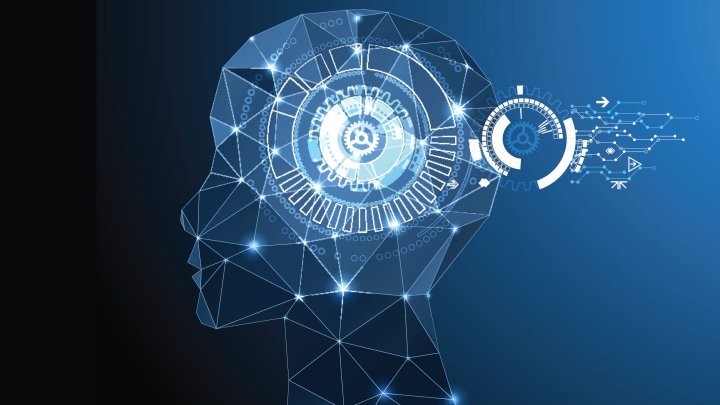- Getting Started with Generative Artificial Intelligence
- Mastering Image Generation Techniques with Generative Models
- Generating Art with Neural Style Transfer
- Exploring Deep Dream and Neural Style Transfer
- A Guide to 3D Object Generation with Generative Models
- Text Generation with Generative Models
- Language Generation Models for Prompt Generation
- Chatbots with Generative AI Models
- Music Generation with Generative Models
- A Beginner’s Guide to Generative Design
- Video Generation with Generative Models
- Anime Generation with Generative Models
- Generative Adversarial Networks (GANs)
- Generative modeling using Variational AutoEncoders
- Reinforcement Learning for Generation
- Interactive Generative Systems
- Fashion Generation with Generative Models
- Story Generation with Generative Models
- Character Generation with Generative AI
- Generative Modeling for Simulation
- Data Augmentation Techniques with Generative Models
- Future Directions in Generative AI
Reinforcement Learning for Generation | Generative AI
Introduction
In reinforcement learning (RL), an agent picks up decision-making skills via interacting with its surroundings. By acting and getting feedback in the form of incentives or penalties, the agent learns how to accomplish a task in an unpredictable, sometimes complicated environment. The agent can discover the best methods by exploring and exploiting them, thanks to this feedback loop.
Importance of Reinforcement Learning
Reinforcement learning (RL) is crucial for machines to learn optimal behaviours through interaction with their environment. It allows agents to make decisions based on trial and error, rewarding positive actions and penalizing negative ones. Successfully applied in robotics, game playing, natural language processing, and recommendation systems.
Understanding Reinforcement Learning
Using the machine learning technique of reinforcement learning, an agent learns how to interact with its surroundings in order to maximize the sum of its rewards. supervised or unsupervised learning, which gains knowledge from labeled data, is not the same as this.

The agent, the environment, and the reward signal are the three primary parts of reinforcement learning. The agent refines its decision-making process through repeated interactions in order to maximize reward.
Creative Generation with Reinforcement Learning
The use of reinforcement learning (RL) algorithms for creative generation activities, such as writing, music, painting, and molecular design, is now under investigation. With their ability to explore large solution spaces and find new patterns, reinforcement learning algorithms have become more accessible to human designers. Through repeated generation and refinement of outputs, RL agents can enhance their performance gradually by concentrating on sequential decision-making.
Applications in Various Domains
Art Generation: From abstract compositions to photorealistic photos, RL algorithms have been used to create art in a variety of ways. These agents are capable of iteratively improving their works and producing visually spectacular artworks that are on par with those made by human artists by using feedback from art critics or human viewers.
Music Composition: RL has been applied to the field of music composition to produce innovative works in a variety of genres and styles. RL agents are capable of creating visually appealing and musically coherent music by training on a dataset of pre-existing music and getting input on the calibre of generated melodies or harmonies.
Text Generation: Reinforcement learning techniques have also proven beneficial for tasks related to natural language processing (NLP), such as text generation. By learning from human feedback on elements like fluency, coherence, and inventiveness, RL agents can be educated to produce creative and coherent poetry, stories, or even discourse.
Drug Discovery: Reinforcement learning is making great progress in scientific fields like drug development, in addition to the arts and creative fields. RL agents can explore the wide range of potential compounds and find good options with desirable qualities, like safety and efficacy, by modeling molecules as sequences of actions (e.g., adding or removing chemical groups).
Challenges and Future Directions
While reinforcement learning is very promising for generating innovative ideas, there are a few issues that need to be resolved before its full potential can be realized. These include making sure AI-generated content is used ethically and responsibly, managing high-dimensional input spaces better, and developing more effective exploration methodologies.
Future work in this area may focus on investigating more sophisticated reinforcement learning (RL) algorithms, including deep reinforcement learning, which can handle intricate input modalities and identify long-term dependencies in sequential decision-making tasks. Furthermore, to advance the state-of-the-art in creative generation with reinforcement learning, multidisciplinary cooperation between AI researchers and artists, musicians, and domain specialists will be essential.
Conclusion
A strong framework for addressing creative generating issues in a variety of fields is reinforcement learning. We may bring in a new era of AI-assisted creativity where intelligent agents act as collaborators and invention catalysts by fusing the exploratory capability of RL algorithms with human expertise and feedback. The future of the creative generation appears more promising than ever as we continue to push the limits of what is possible with reinforcement learning.

